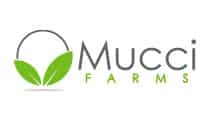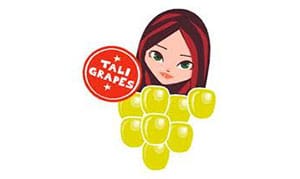The Importance of Peach Fruit Quality Control
Did you know that the only difference between peaches and nectarines is one gene? This gene is responsible for making peaches fuzzy on the outside and nectarines smooth. Apart from that, the fruits are identical!
Optimizing peach quality control and nectarine evaluation is essential for everyone who has skin in the game (no pun intended) – from growers and pickers, to warehouses, retailers, and anyone else in the fresh produce value chain. By creating a consistent process for fruit quality control, organizations can optimize profits, avoid price renegotiations, and take the subjectivity out of quality control decisions.
Common Peach and Nectarine Defects
The following defects are the ones that are most likely to affect peach and nectarine quality across the supply chain:
Pedicel Tear
The pedicel is the stalk that holds the flower in place on an inflorescence. Lesions often begin at the pedicel end when the harvested fruit has been infected.
Cracked Stone
Irregular periods of rain and drought may result in split pits or cracked stones. This can attract mold and even constitute a health hazard for the end consumer.
Deformations
A dip in peach quality can be caused by a number of things. If your fruit has a strange shape, this could be the result of insects, mold, or disease.
Soft Shoulder
Often, the first place to ripen in peaches is the shoulder of the fruit. This may cause it to get unpleasantly soft or mushy as the rest of the fruit ripens, especially due to falls and pressure. This may be prevented through the design of special handling equipment and operation guidelines that prevent impact bruises on peaches.
Low Color
Low color in peaches can be related to their pH levels or to factors such as weather, irrigation, or shade. External brown and black spots or stripes are usually related to heavy metals, while internal browning can be caused by chilling damage.
Healed Wounds
Any kind of wound on a peach is a perfect way for infectious microorganisms to make an entrance. After these wounds heal, the infection often remains.
Stains
Black, blue, brown, or purple spots on peaches can be the result of contamination, and they are usually only noticed after transit and storage.
Russet
Insect damage and mechanical rubbing are the most common causes of russeting on peaches, causing an unsightly scarred area.
Sunburn
With the naked eye, it’s hard to tell much about peach quality from sunburn alone. It could be simply where the sun hit the fruit or it could be a sign of defoliation or bacteria.
Cracks
Cracks in soft fruit like peaches usually mean there has been inconsistency in the irrigation. They could also be the result of unseasonal dry weather followed by a lot of rain. While you may not be able to control the weather, you could find ways to minimize the effects of extreme weather changes.
Oidium (Fungus)
Fungi such as powdery mildew, peach leaf curl, and oidium can attack the flowers, leaves, and fruit of any crop, quickly destroying a harvest.
Insect Damage
There are dozens of insects that can cause peach defects. Think stink bugs, thrips nymphs, and even earwigs, commonly associated with nectarine scarring.
Moths
Fruit moths love peaches! If infested, the fruit will have brown tunnels through them where the insects have bored holes.
Dehydration
The under- or over-watering of peach plants can strongly impact their ability to grow and flourish, and change the way the fruit looks when ripe.
Immature/Over-mature
You can’t always tell when a peach is ripe. Sometimes, over or under maturity will cause the fruit to fall from the tree or damage its appearance.
Bruising
While peach quality is important and customers want a ripe yield, there is more potential for bruising when handling ripe fruit. This can have a direct impact on the quality of fruits.
Open Wounds
Open wounds are an open invitation for fungi, insects and weather damage. Rhizopus fungi, for example, needs a wounded fruit to start an infection. Afterwards, it will go on infecting the adjacent fruit (even if they are intact) very easily.
Decay
Peach leaf curl is a common peach defect that growers need to look out for. If left ignored, it can even bring down the whole tree. Failure to take hygiene measurements at pre-harvest can lead infectious microorganisms like fungi to prosper and cause decay at post-harvest.
Interesting Facts about Peaches
- The top 5 countries for exporting stoned fruit are Spain, Italy, Belarus, Greece, and Lithuania. Spain has an amazing 40% of the market share.
- Did you know that the only difference between peaches and nectarines is one gene? This gene is responsible for making peaches fuzzy on the outside and nectarines smooth. Apart from that, the fruits are identical!
- China accounts for 57.8% of the world’s peach growth, despite not making the top 5 in terms of exports. The next fact may explain why.
- The original peach came from China, where the fruit is still believed to grant you long life and keep you looking and feeling young. In China, women often still carry peach blossoms for luck at their weddings.
- The two main varieties of peach are the Clingstone and the Freestone. Aptly named, it’s much harder to get the fruit off the stone of the former.
Common Attributes for Nectarine and Peach Quality Control
The following internal and external nectarine and peach attributes are commonly used for quality evaluation:
Color
Diameter
Coverage
BRIX
Firmness
For the full list of attributes that the Clarifruit platform currently evaluates and recommended quality standards for each, download our free app now.
The Clarifruit platform also integrates with 3rd-party technology to evaluate external tomato attributes. Learn more here.
Peach/Nectarine Growing Seasons in the Northern and Southern Hemispheres
| HEMISPHERE | Jan | Feb | Mar | Apr | May | Jun | Jul | Aug | Sep | Oct | Nov | Dec |
|---|---|---|---|---|---|---|---|---|---|---|---|---|
| Northern | ||||||||||||
| Southern |
Scroll left to see the growing seasons table















